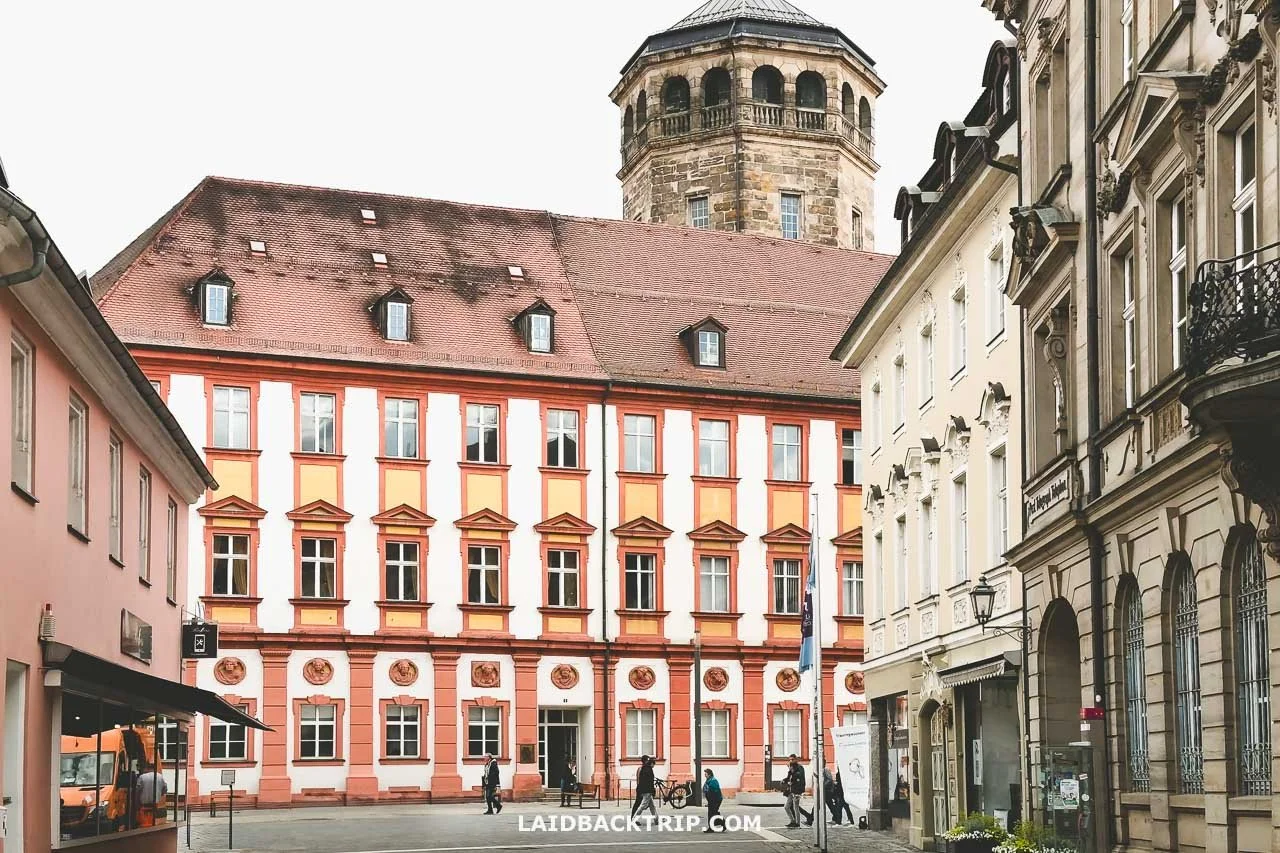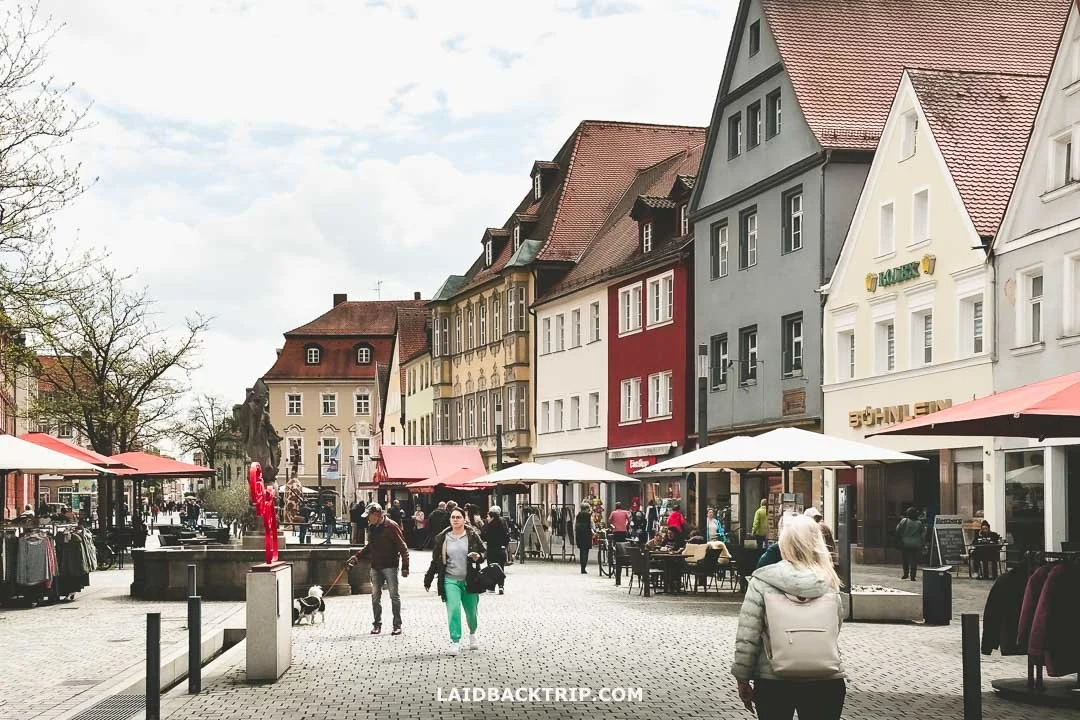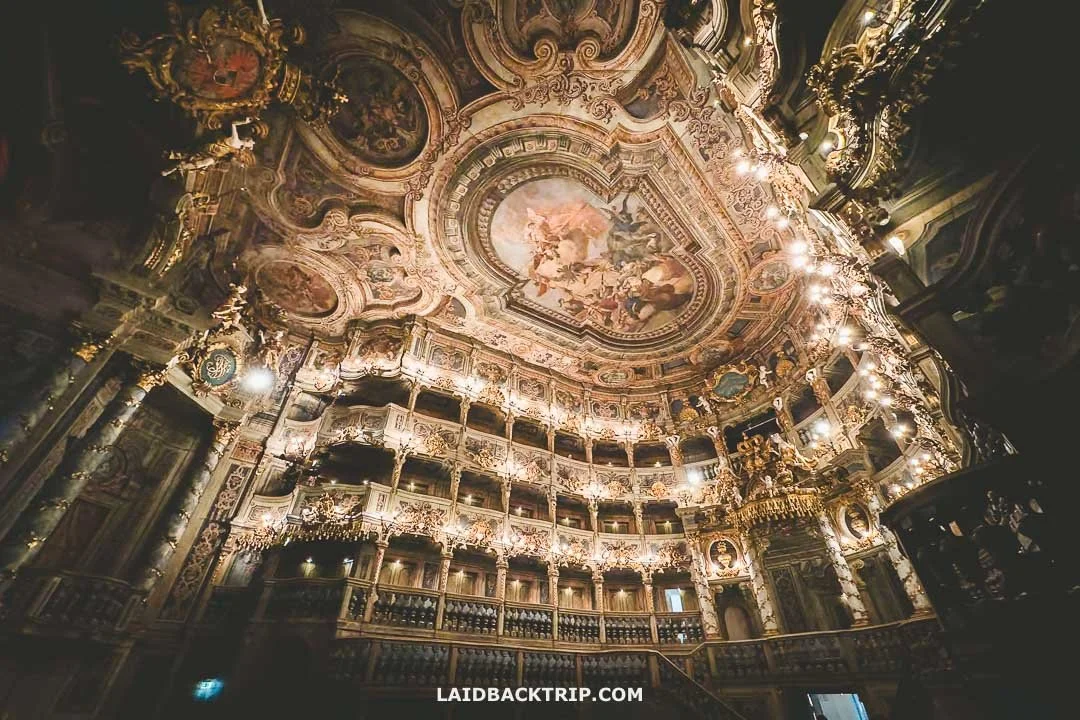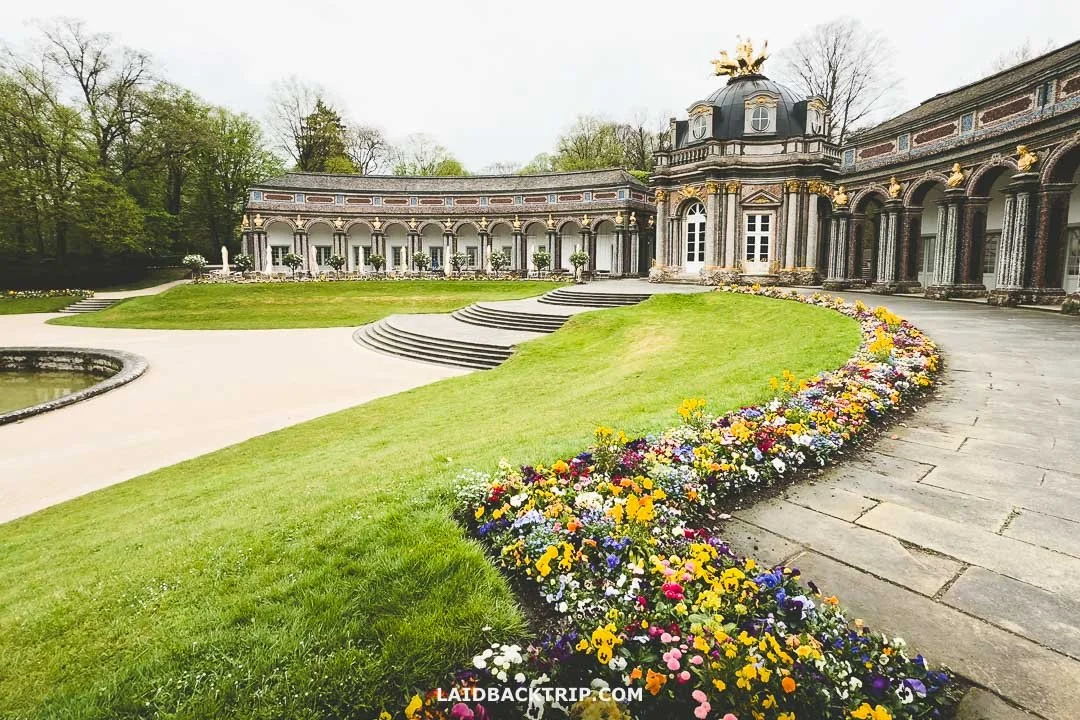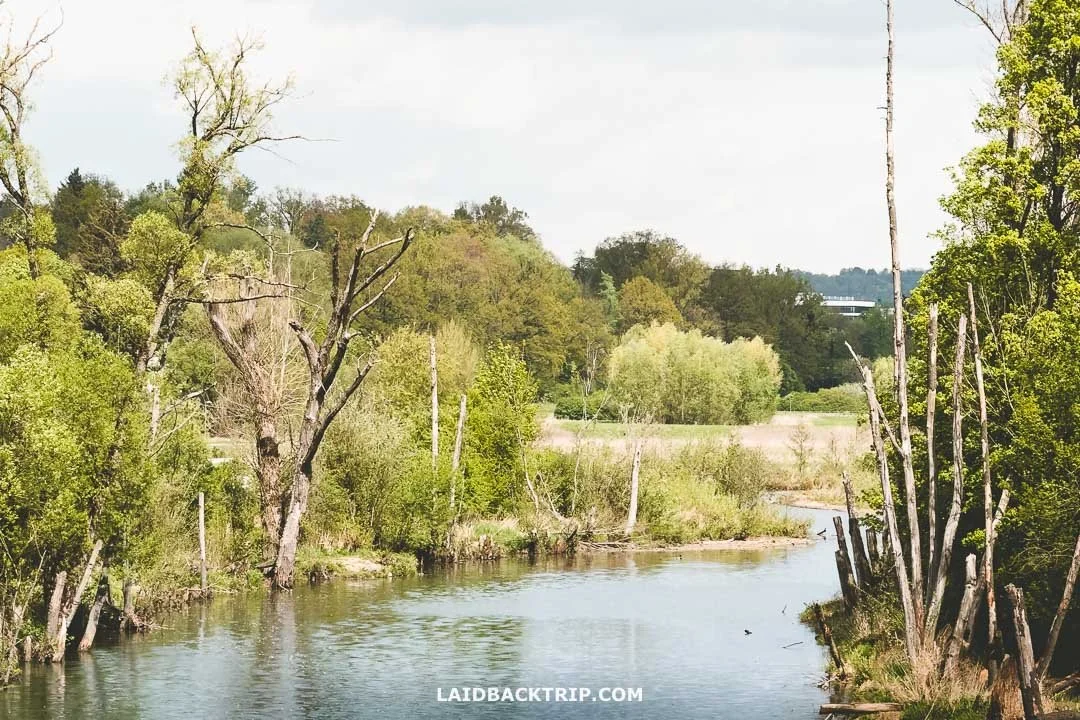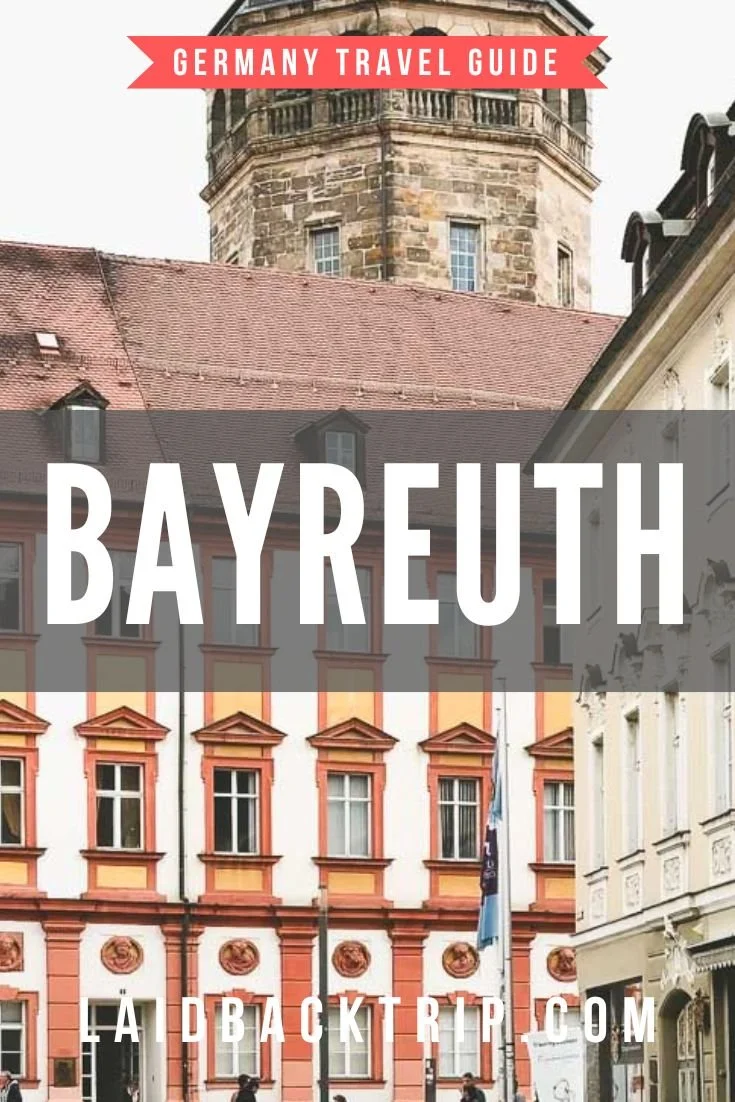Bayreuth Travel Guide
Bayreuth is a perfect destination for history and music lovers.
Read our guide on Bayreuth in Germany. It includes best things to do and see, tips on how to get, where to stay, or when to go.
If you're planning a trip to Bavaria, the city of Bayreuth might be a great addition to your itinerary. Situated in the east-central part of Germany, Bayreuth is mostly known for the Margravial Opera House, a UNESCO World Heritage Site, and the Bayreuth Opera Festival, which commemorates the life and work of Richard Wagner. But there are definitely more things to see and do in Bayreuth, especially for those interested in German art, culture, and history.
At first, we were unsure whether we would have enough time to make a detour on our way from Nuremberg to Bamberg. Luckily, we try to keep our travel itinerary loose whenever we can. After a few last-minute adjustments, we eventually made it there. To our surprise, this little gem had plenty to offer. So here's everything you should know about Bayreuth before you go.
What to See and Do
One of the main reasons why we enjoyed Bayreuth so much was that it showed us Bavaria from yet another perspective. We walked along the mighty Danube River in Regensburg, discovered Holy Roman Empire history at the Imperial Castle of Nuremberg, had a beer at Weltenburg Abbey, or saw the greatest Germans at Walhalla Memorial.
Now, it was time to learn even more about German music, culture, and history. Bayreuth's history is tightly connected with two names - Wilhelmine of Prussia and Richard Wagner. As you will find out, their life and work are one of the main themes of every trip to this city. So, what is there to see and do in Bayreuth?
Old Town
Bayreuth has a compact Old Town that is easily explored on foot. Here, you will find most of the top attractions the city has to offer. You should also explore the pedestrianized Maximilianstraße. This is the main street in the Old Town, which is lined with traditional houses, stores, restaurants, etc. Plus, it's home to the Kunstmuseum Bayreuth and Old Palace (Alte Schloss).
Arguably, the Old Town in Bayreuth is not as picturesque as Rothenburg or Bamberg, but it still has its charm.
Bayreuth has a compact and walkable Old Town.
Margravial Opera House
This 18th-century theater was one of the main Bayreuth projects of Margravine Wilhelmine, a passionate admirer of opera, music, and art in general. Despite its modest exteriors, the Margravial Opera House (Markgrafliches Opernhaus) is one of the most extraordinary buildings we've ever visited.
The opera house, designed in a Baroque style, has an elaborate wooden framework with superb acoustics and lavish interiors decorated with mythological and allegorical paintings, an impressive auditorium, and opulent boxes.
Bayreuth's Margravial Opera House is a UNESCO World Heritage Site.
The main highlight for us was the stage, which was all about perspective and illusion. It also had elaborate stage machinery, which you can see in the museum afterward. It's a true masterpiece that lefte us speechless.
The museum is a well of information on everything connected to the opera house, music, Margravine Wilhelmine, Bayreuth, and more. Margravial Opera House was added to the UNESCO World Heritage Site list in 2012 and soon afterward underwent extensive renovations that took about five years. We self-toured the opera house, though guided tours were also available.
New Palace
Located in the heart of Bayreuth, New Palace (Neues Schloss) is a must-see for all those who want to learn more about Margravine Wilhelmine, her husband Frederick, and, generally, the life of German royal dynasties during the 18th century. The New Palace is only a short walk from the Margravial Opera House, so that's where we headed after we were done with the opera house.
The New Palace was built after the Old Palace was destroyed by fire in 1753, with Margravine Wilhelmine influencing the overall design. While this is no Linderhof Palace or Munich Residence, the palace still has plenty of beautifully decorated rooms.
Palm Room is the highlight of every visit to Bayreuth's New Palace.
The self-guided tour includes both North and South Wings, featuring rooms such as the Drawing Room, Cabinet of Fragmented Mirrors, or Palm Room (which is the highlight here). Guided tours allow you to see the Italian Palace, which Frederick built for his new wife, Princess Sophie Caroline von Braunschweig Wolfenbuttel, after Wilhelmine passed away.
Entry Fee: There is a small entry fee to New Palace. Make sure to also walk around the Court Garden adjacent to the New Palace. This stunning castle park is free to enter, has a long canal with a small island, and lovely walking paths.
Hermitage Bayreuth
The third piece of the puzzle that helps you understand the Margravine Wilhelmine and other Bayreuth's ruling families is the Hermitage, located outside Bayreuth. Margrave Georg Wilhelm initially used Hermitage Bayreuth as a retreat for the court to imitate the simple life of hermits (hence the name).
Hermitage is home to a beautiful park and Old Palace that offers guided tours.
After Margravine Wilhelmine became involved, she kept the Old Palace untouched but transformed some structures and added new features to the park. The hermit idea diminished by the end of the 18th century and the Hermitage was turned into a beautiful retreat with a modern park.
One of the best parts about the Hermitage is that it is free to enter. Yes, you can wander around the complex without spending a dime, though your guided tours are available at the Old Palace for a small fee.
Hermitage Bayreuth is located about 4 kilometers east of Bayreuth and can be easily reached on foot, by bike, bus, or car (there is free parking).
Wilhelminenaue
If you want to take a break from all those museum and have extra time, Wilhelminenaue is a great place to go. This well-landscaped park along the Roter Main is about a 20-minute walk from the historical town center.
It combines a meandering river, rare plants, a natural bird habitat, and several designated areas for sports and leisure activities. Wilhelminenaue is popular among local families, and as it's not right in the town center, it flies under the tourist radar.
Wilhelminenaue is a recreational area in Bayreuth along the Red Main River.
If you want to stay active, our tip is to walk or cycle from the town center to Hermitage and back (3.5 kilometers one way) and explore the Wilhelminenaue along the way.
Entry Fee: Wilhelminenaue is free to enter.
The City Church of the Holy Trinity
The City Church of the Holy Trinity (Stadtkirche Heilig Dreifaltigkeit) has dominated Bayreuth's city center since the 12th century. The church burned down at the beginning of the 17th century and was rebuilt in Gothic style.
Today, this historic landmark has a bright red and white interior with a beautiful altar, a burial crypt, changing exhibitions, and towers (you can climb to the top on Saturdays).
City Church of the Holy Trinity is the most famous church in Bayreuth.
The City Church of the Holy Trinity is easily accessible on foot (and free to enter). This is a relatively ordinary church, at least compared to Pilgrimage Church of Wies or Munich's Frauenkirche. That said, it's still worth seeing if you like history or if this is your first time in Europe.
Richard Wagner Museum
Richard Wagner Museum should be on your list if you're into music. Born in Leipzig, Wilhelm Richard Wagner (1813-1883) was a German composer today mainly known for his exquisite operas (music dramas).
Richard Wagner is considered one of the greatest composers of all time, but at the same time, one of the most controversial ones. Interestingly enough, he was controversial even during his turbulent life due to his strong anti-Semitism (it's not surprising his music was later used by Hitler as one of the symbols of the Third Reich), racism, personal issues, etc.
Bayreuth's Richard Wagner Museum is partly housed in the Wahnfried House.
No matter whether you separate art from the artist, his life story is as fascinating as his music (we listened to it a lot, and it's not really road trip material). So if you want to know all about Richar Wagner, the museum, which consists of Wahnfried House (where he lived) and the new building, is definitely worth seeing.
Opening Hours: It's open daily from 10 AM to 5 PM between July and August, and Tuesday to Sunday from September to June. The museum is located on Richard-Wagner-Straße in the city center (it's also accessible from the New Palace Court Garden).
Tickets: The entry fee is €10 for adults.
Our tip: By the way, you can find Richard Wagner's grave in a small area shaded with trees between the museum and the castle park.
Bayreuth Festspielhaus
We've already talked about the Margravial Opera House, but did you know that Bayreuth actually has two opera houses? The second opera house is known as Bayreuth Festival Theater (Bayreuth Festspielhaus), and you can find it on a green hill about two kilometers north of the city center.
The second opera house was simply built to stage Richard Wagner's operas. If you're wondering why the second theater was built, it was because Margravial Opera House, in Richard Wagner's opinion, didn't have impeccable acoustics, was too small, etc., and was generally deemed unsuitable for modern-day opera (though there were other reasons as well, such as Wagner's financial independence).
Every summer, Bayreuth transforms into a completely different city. One of the moving forces behind it is the Richard Wagner Opera Festival, which is annually held in the Bayreuth Festspielhaus. Mind you, the tickets usually go on sale in December, and as you can imagine, there's a high demand for them.
Ecological Botanical Garden of the University of Bayreuth
The Okologisch-Botanischer Garten der Universitat Bayreuth is one of those places that is not a must-see (unless you're a botanist enthusiast, of course). However, if you're in the mood for a relaxing walk or just want to see some unique plants and flowers, the botanical garden managed by the University of Bayreuth is a great place to explore.
You can see about 12.000 plant species here, so it will take a few days to see them all. Jokes aside, you can definitely spend a few hours here, especially on a sunny day.
Botanical Garden is a perfect retreat from Bayreuth's busy streets.
We don't have to mention that the botanical garden in Bayreuth is most beautiful from late spring to summer. Admittedly, the botanical garden was not as spectacular in April as the one visited in Linz two months later, but still great for walking.
The botanical garden is open daily but has seasonal opening times. Note that the greenhouses close earlier than the garden grounds. There is no entry fee to the Ecological Botanical Garden of the University of Bayreuth.
How Much Time Should I Set Aside for Bayreuth?
We believe that a half-day in Bayreuth will give you enough time to see all the main attractions the city has to offer. In four to six hours, you will have enough time to see the Margravial Opera House and Hermitage (or a place of your liking, such as the New Palace or Richard Wagner Museum) and explore the compact town center.
Obviously, the amount of time you need for Bayreuth depends on your interests. If you like music, culture, and history, you can easily spend a full day (or even two) here without getting bored. The museums Bayreuth offers are worth extra time.
When to Go
If you prefer warm weather, long days, and plenty of daylight, summer (June - August) might be the ideal time to visit Bayreuth. Just be prepared for bigger crowds and higher prices for accommodation, not just here but during your entire trip to Bavaria.
Furthermore, Bayreuth has several beautiful parks (New Palace, Wilhelminenaue, Hermitage) that are especially beautiful during the late spring and summer. We can't fail to mention that the city hosts the annual Bayreuth Festival (Bayreuther Festspiele or Richard-Wagner-Festspiele), which usually starts at the end of July and lasts about a month.
We visited Bayreuth in mid-April, and the weather was a mixed bag. In other words, it was a typical spring weather with changing conditions during the day. It was cold, windy, and rainy in the morning, though the afternoon, with plenty of sun, told a different story. You can visit Bayreuth in winter, which is the perfect time to explore all the museums the city has to offer. Keep in mind that the city will have a different vibe during the colder months, but that's expected.
Bayreuth is most enjoyable during the summer months of July and August.
Packing Tips
Bayreuth and all its parks are best explored on foot, so make sure to have comfortable shoes and a lightweight daypack to store your essentials. Days are warm or hot during the summer in Bayreuth, so pack clothing (shorts, t-shirts, etc.) that is comfortable and breathable.
During the spring and fall, think of layers, and you should be fine. A good rain jacket or travel umbrella comes in really handy during this period (admittedly, we pack our trusty rain jackets for every season). Bayreuth sees cold winters, so pack warm clothing. Bring a winter coat, gloves, and a hat.
How to Get to Bayreuth
Bayreuth is located in the northern part of Bavaria, in the region called Upper Franconia. Bayreuth is accessible by car, train, bus, or bike. It really depends on what you prefer - we brought our own car for this trip (check rental car deals here).
By Car: Bayreuth sits on the A9, a major highway connecting Berlin with Munich (and Leipzig and Nuremberg). The city is about 90 kilometers north of Nuremberg, 65 kilometers west of Bamberg, 150 kilometers west of Wurzburg, 150 kilometers north of Regensburg, and 230 kilometers north of Munich.
By Train: Bayreuth is well connected with other German cities, so it's really easy to get there by public transport no matter where you currently are. The main train station, Bayreuth Hauptbahnhof, is located less than a 10-minute walk from the historical part of the city. For schedules and more information, check the Deutsche Bahn website.
By Bus: If you prefer to get to Bayreuth by bus, FlixBus operates most of the routes connecting the city with the rest of the country. The FlixBus bus stop is on Goethestraße, next to the main train station.
Tips on Where to Park
Parking is easy in Bayreuth thanks to several parking garages and lots such as Parkhaus Badstraße, Sonnenhaus, or the Parkplatz Opernhaus. We left our car at Parkplatz Wilhelminenaue, about 15-20 minutes from the town center. Parking was free there.
Hotels in Bayreuth
As mentioned earlier, the town center of Bayreuth is compact and walkable. So it's only logical to stay somewhere within this tourist area, no matter whether you arrive by car or public transport. As mentioned earlier, the main train and bus stations are about a 10-minute walk from Bayreuth's main attractions, such as the Margravial Opera House, Richard Wagner Museum, and New Palace. The best part is that you can find several great hotels in this area, making everything much easier.
If you have a car, you have more freedom to choose your accommodation. Still, we recommend staying in the central area as we don't see any reason to stay elsewhere. So here are a few tips on the best hotels in Bayreuth for every budget.
Budget | BB Hotel Bayreuth - If you're looking for affordable accommodation, this hotel offers basic but clean rooms, a central location (the opera house is just 300 meters from here), and easy parking.
Mid-range | ibis Styles Bayreuth - Situated next to the Bayreuth Hauptbahnhof, this popular chain hotel has contemporary decor, air-conditioned rooms, and helpful staff.
Mid-range | H4 Hotel Residenzschloss Bayreuth - Located about a 10-minute walk from the Opera House and New Palace, H4 Hotel Residenzschloss is a great place to stay.
Bayreuth's town center is the most popular area to stay in.
Is Bayreuth Safe to Explore?
Bayreuth is generally safe to visit, so that's one less thing to worry about. It's a relatively small city, and crime is rare. Most of Bayreuth is also perfectly safe to walk around at night, no matter whether you travel as a family, couple, or female solo traveler. That said, no city is completely safe, so keep your wits about you.
Always watch your belongings, especially in crowded areas, museums, markets, etc., that are often targeted by pickpockets (pretty much everywhere around Europe). We also prefer to leave the car in secure garages to keep our minds at ease.
Travel Insurance
We never leave home without travel insurance that was designed to cover our expenses if something goes wrong during the trip. Travel insurance protects against theft, flight delays, injury, illness, cancellations, and much more. Travel smarter and safer!
World Nomads provides travel insurance for travelers to cover their trip essentials, including sports and adventure activities.
SafetyWing is affordable travel insurance for backpackers, long-term travelers, and digital nomads.
We spotted some awesome street art inspired by Bayreuth's culture and history.
Is Bayreuth Worth Visiting?
Although Bayreuth is not as famous as nearby cities such as Bamberg or Nuremberg, it has its charm, and we believe it's definitely worth seeing. The main draw of Bayreuth is the UNESCO-listed Margravial Opera House, which is worth visiting on its own, even if you have no interest in art or are not in the mood to see another Bavarian town.
This would be a shame, though, as Bayreuth has plenty to offer, and you can fill your day with all sorts of fun activities. You can see the stunning interiors of a New Palace, walk around the parks that are especially beautiful during the blooming season, take a trip to Hermitage (for another great walk), learn about the life of Richard Wagner, or attend the Bayreuth Opera Festival.
Another reason why we thoroughly enjoyed our trip to Bayreuth was that exploring all the parks, music, and history was a relaxing experience. It might be a bit strange comparison, but the whole experience was so relaxing that it felt like we were in Bad Kissingen or somewhere similar. It was just a joy to explore.
To conclude, we're not saying Bayreuth is a must-include in your itinerary. But we believe those interested in music, culture, and history won't leave the city disappointed. Plus, you'll avoid the crowds you get at Neuschwanstein or Legoland.
Travel Resources
Here you can find links to all the travel resources we use and which you might find helpful when planning your next holiday.
Accommodation: When looking for accommodation, we usually search hotels via Booking.com or Hostelworld.
Tours: Although we love to travel independently, some places are better to visit with a guided tour.
We prefer GetYourGuide for its easy-to-use interface and solid reputation. Another great alternative is Viator.
Rental Cars: When going on a road trip, we always use Rentalcars.com, a reliable site for booking a rental car in advance.
Flight Tickets: When looking for flight tickets, you can search Skyscanner to find the best price.
Travel Insurance: World Nomads and SafetyWing cover against risks of travel.
